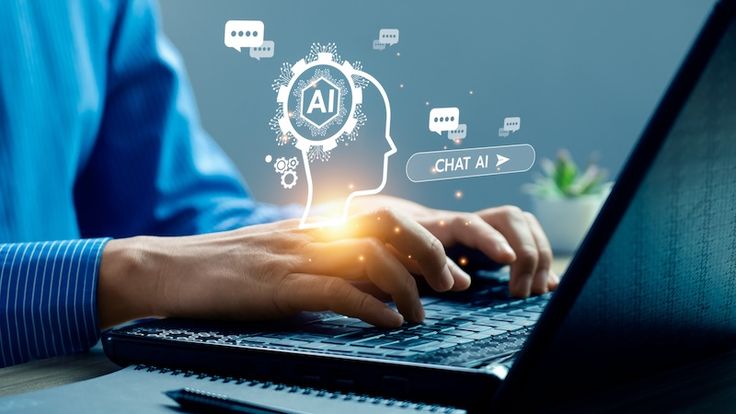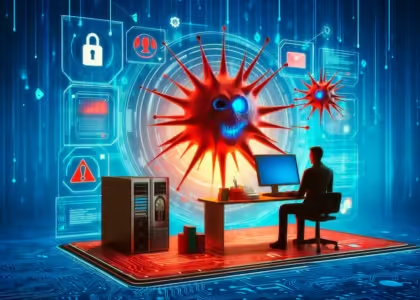Overview
Technology in higher education has emerged as a major factor in recent years, changing the way that institutions function, teachers teach, and students learn. With the advent of AI-driven tools and online learning platforms, the digital era has not only increased access to education but also individualised education, making it more dynamic and tailored to each student’s needs. The traditional classroom setting is evolving into a hybrid format that provides flexibility and improved learning possibilities as universities and colleges adopt technological technologies. This article examines 10 key ways that technology in higher education is bringing about change and giving educators and students alike access to resources that increase effectiveness, accessibility, and engagement.
Table of Contents
1. Virtual Education Platforms: Increasing Accessibility
The emergence of online learning platforms is among the most significant innovations brought about by technology in higher education. These online learning environments, like Coursera, edX, and Khan Academy, have democratised education by providing access to top-notch content for students anywhere. Conventional obstacles like geographic distance and budgetary limitations are rapidly being lifted, enabling students to enrol in classes offered by prominent universities virtually.
These platforms’ integration into university curricula has also sparked the creation of hybrid learning models, which allow students to take advantage of both online and in-person instruction. This flexibility offers a practical solution for students balancing several duties in addition to catering to non-traditional students like working professionals.
2. AI-Powered Instruments: Tailored Education Programs

By providing individualised learning experiences, artificial intelligence (AI) is significantly improving technology in higher education. Using artificial intelligence (AI), adaptive learning platforms customise course materials to each student’s requirements, taking into account their learning style and speed. By tailoring training to each student’s present level of understanding, this guarantees that they are not only thrown through a standardised curriculum but rather encouraged to master it.
AI-powered chatbots, virtual assistants, and grading software have also reduced administrative work, freeing up faculty members to concentrate more on mentoring and instruction. AI solutions give teachers more time to spend meaningfully interacting with their students by automating tasks like grading assignments and responding to frequent questions from students.
3. Digital Collaboration Tools: Improving Communication and Group Work
The foundation of contemporary education is collaboration, and technology in higher education has facilitated remote learning by enabling students to work together more easily. Group assignments become less stressful and more productive with the help of tools like Microsoft Teams, Slack, and Google Workspace, which facilitate real-time communication, file sharing, and project management.
Additionally, by encouraging collaboration between teachers and students, these tools facilitate more efficient communication. Furthermore, they promote cross-border cooperation, allowing students to collaborate on global initiatives with classmates from various cultural backgrounds and acquire insightful global perspectives.
4. Augmented and Virtual Reality: Fully Immersive Learning Settings
The immersive learning environments that Virtual Reality (VR) and Augmented Reality (AR) create are rethinking technology in higher education. Students studying engineering and medicine, for instance, can practise surgery in a virtual setting and engage in virtual prototyping without requiring real materials.
These technological advancements provide chances for experiential learning that would be too expensive or impractical to duplicate in a regular classroom. In addition, learners who learn best through visual or kinaesthetic means will find VR and AR to be more interesting than traditional textbook-based education.
5. Learning Analytics: Data-Powered Perspectives for Better Results

In the modern world, data is essential, and technology in higher education has made it feasible to gather, examine, and use data to enhance student results. Learning analytics systems provide educators with important insights into areas where students might benefit from extra support by tracking students’ performance, engagement levels, and development in real-time.
With the use of this information, educational institutions can create individualised intervention plans to support students who could be slipping behind and make sure they keep up. Additionally, it makes it possible for teachers to continuously improve their ways since they can identify which teaching strategies work best and modify their strategies accordingly.
6. Digital Libraries: Increasing the Availability of Educational Materials
Due to their physical location and restricted hours, traditional libraries might occasionally make it more difficult to access educational resources. But because to technology in higher education, students can now access research and study materials through digital libraries in a completely new way. These libraries make it simpler for students to conduct study from anywhere in the globe by providing 24/7 access to thousands of scholarly papers, eBooks, journals, and multimedia materials.
Students’ expenses are also decreased by digital libraries since they don’t need to buy pricey textbooks. As open educational resources (OER) have grown in popularity, more educational institutions are providing free access to course materials, which helps students succeed even more.
7. Blockchain Technology: Improving Educational Qualifications
Another new technology in higher education that has the potential to completely change the issuance, verification, and storage of academic credentials is blockchain. Blockchain technology is perfect for keeping track of academic records, degrees, and certifications since it offers a safe, unchangeable method of data storage.
Students will always have access to their academic records thanks to blockchain technology, and they can share them with prospective employers or other educational institutions without requiring third-party validation. This guarantees the legitimacy of academic credentials while also expediting the employment process.
8. Gamification: Using Play to Engage Students

The integration of game-like aspects into the learning process, known as gamification, is revolutionising the use of technology in higher education. In order to encourage students to interact with the course material in a fun and competitive way, points, leaderboards, badges, and awards are used. Making studying more like a game increases student engagement and improves understanding and retention.
Gamification not only boosts motivation but also stimulates critical thinking and active engagement. Through the use of educational simulations, for instance, students can tackle real-world issues in a risk-free, secure setting, combining the practical and pleasant aspects of learning.
9. Cloud Computing: Streamlining Collaboration and Data Storage
Cloud computing has completely changed higher education technology by offering scalable, affordable options for collaboration, software access, and data storage. Cloud-based solutions ensure that learning is not limited to physical classrooms by enabling educators and students to access their work from any device with an internet connection.
Additionally, cloud computing makes it easier for academics, teachers, and students to collaborate. Cloud platforms facilitate seamless and collaborative learning by facilitating group projects, file sharing, and real-time document editing.
For more information, click here
10. Mobile Education: On-the-Go Training
As smartphones and tablets become more commonplace, mobile learning has emerged as a significant technology in higher education trend. With the unmatched flexibility of mobile apps, students can access course materials, take part in conversations, and finish projects from anywhere. This is especially helpful for students who have to juggle employment or family obligations in addition to their studies because it allows them to interact with the material at their convenience.
Additionally, by enabling students to participate in microlearning modules—brief, targeted lessons that readily fit into daily routines—mobile learning fosters continual learning. These condensed learning sessions guarantee that students stay interested in their studies by helping to reinforce key ideas.
Final Thoughts
Technology integration in higher education is more than a fad; it represents a fundamental change in the nature and means of education. The digital revolution is increasing the accessibility, customisation, and effectiveness of education with methods like AI-powered tools and online learning platforms. Higher education institutions must be flexible and progressive as these innovations develop, adopting new technologies to improve student outcomes and equip graduates for a world that is changing quickly.
Learning environments that are more inclusive, adaptable, and efficient can be established by utilising technology in higher education to meet the varied demands of today’s students. Digital education is the way of the future, and it’s already changing how we teach, learn, and develop.
FAQs: Technology Use in Higher Education
1. How does technology function in higher education?
In higher education, technology is essential to improving the quality of instruction and learning. It provides cutting-edge resources and platforms that enhance accessibility, customisation, and interactivity of learning. With its ability to offer flexibility, increase engagement, and facilitate improved learning outcomes, technology empowers instructors and students alike. Examples of this include AI-driven learning systems, online courses, and virtual classrooms. Additionally, it aids organisations in streamlining administrative procedures to guarantee effective operations.
2. How does higher education benefit from online learning?
Higher education has been completely transformed by online learning, which does away with conventional constraints like cost, time, and geography. Nowadays, students can enrol in top-notch courses from recognised universities anywhere in the globe. It offers flexible study schedules that let non-traditional students complete their higher education at their own speed, including parents, working adults, and overseas students. Additionally, lifelong learning is made possible by online resources, which allows people to keep improving their abilities throughout their careers.
3. What advantages do AI-driven learning tools offer?
Higher education can benefit from a number of AI-powered technologies, such as adaptive learning systems, automated grading, and personalised learning experiences. These resources evaluate how a student learns, pointing out areas of strength and growth. They then modify the material to fit the needs of the pupils, guaranteeing that they receive specialised training. In order to free up more time for teachers to concentrate on mentoring and interactive instruction, AI can help automate time-consuming processes like grading assignments and responding to student questions.
4. How has technology enhanced teacher and student collaboration?
Regardless of location, digital collaboration technologies like Slack, Google Workspace, and Microsoft Teams have made it simpler for teachers and students to collaborate and communicate. These tools improve teamwork in both offline and online contexts by enabling real-time communication, file sharing, and group project management. Additionally, technology makes it easier for students to collaborate across borders on global initiatives, developing their cross-cultural communication skills and global perspectives.
5. How do augmented and virtual reality affect higher education?
The fields of higher education are revolutionised by augmented reality (AR) and virtual reality (VR). With the use of these technologies, students can participate in interactive, hands-on learning experiences in virtual settings that mimic actual situations. For instance, engineering students can use augmented reality tools to construct prototypes, while medical students can practise procedures in a virtual environment. These technologies facilitate better knowledge through experience learning and appeal to a variety of learning styles. They also make abstract concepts more concrete.
6. How does technology assist college-bound kids with disabilities?
Thanks to assistive technology, which makes education more inclusive, students with impairments now have access to new opportunities. Students who have visual or movement impairments can engage in online courses and access digital content with the help of text-to-speech software, screen readers, and voice recognition tools. Students with hearing impairments can attend multimedia and video courses more easily thanks to closed captioning and transcription services. In addition, learning management systems (LMS) can be tailored to each student’s unique requirements, guaranteeing that education is accessible to all.
7. How does cloud computing fit into the higher education landscape?
Rather than depending on local servers or personal devices, cloud computing enables instructors, institutions, and students to store and access data, apps, and services over the internet. This implies that students in higher education can readily access course materials, turn in homework, and work together on projects from any location. Scalability is another benefit that cloud computing offers to organisations, enabling them to manage massive data volumes without the need for expensive equipment. Because teachers and students can collaborate on papers in real time, no matter where they are in the world, it improves teamwork.
8. What are virtual libraries, and what are the advantages for students?
Digital libraries are always-available online repositories of scholarly materials, including books, journals, research papers, and multimedia files. Students can access information from anywhere at any time with digital libraries, unlike traditional libraries that might have restricted hours and physical resources. Students may readily explore, reference, and use a wide range of scholarly resources, which is very helpful for research reasons. Additionally, since many educational institutions provide free or inexpensive access to instructional content, digital libraries lessen the need for expensive textbook purchases.
9.How is blockchain technology applied in higher education?
Academic credentials including degrees, certificates, and transcripts are being safely stored and verified in higher education through the use of blockchain technology. The authenticity of academic records is guaranteed by the decentralised, tamper-proof mechanism that blockchain offers. Students gain from this technology since it allows them to have lifetime access to their credentials, which they may share with employers or other educational institutions without requiring third-party validation. It guarantees that academic qualifications cannot be fabricated and expedites the employment process.
10. Explaining gamification and its impact on learning
Gamification is the process of incorporating aspects from games—like points, leaderboards, badges, and rewards—into learning exercises. Gamification is making learning more interactive, competitive, and motivating for students, which improves retention and engagement. Since students are more likely to remain engaged in the learning process when they receive prompt feedback and incentives for their efforts, it promotes active involvement. Gamification can also assist students in honing their critical-thinking and problem-solving abilities by simulating real-world situations in the classroom.
- What changes have mobile learning brought about in higher education?
With mobile learning, students have unmatched freedom by using their smartphones and tablets to access course materials, finish assignments, and take part in conversations. Students can interact with their homework via mobile learning apps from anywhere, which is especially useful for those juggling school with job or family obligations. By offering bite-sized courses or microlearning modules that readily fit into everyday routines, mobile learning encourages continual engagement and helps students stay on track even while they are on the go.
12. What obstacles does the use of technology in higher education present?
Although there are many advantages to technology, there are obstacles preventing its widespread use in higher education. Among the principal difficulties are:
Price: For institutions, implementing cutting-edge technology like digital libraries, virtual reality, and AI can be costly.
Mentoring: To use new technologies and platforms effectively, professors and students may need to receive training, which might cost money and effort.
Digital Disparity: Existing disparities may worsen if all pupils do not have equitable access to high-speed internet or the required gadgets.
Problems with Security: The growing usage of technology also brings up issues with cybersecurity and data privacy. Schools need to make sure that student data is secure against hacking and improper use.
13. In higher education, how is artificial intelligence being applied beyond personalised learning?
Artificial intelligence (AI) is being utilised in higher education for administrative duties, research, and decision-making in addition to personalised learning. AI-powered chatbots are frequently used to help students with questions about financial assistance, course registration, and admissions, which lightens the administrative staff’s job. AI techniques are also utilised in research to speed up the discovery process in disciplines like engineering, social sciences, and medicine by analysing massive datasets and generating insights. AI algorithms also assist organisations in making data-driven decisions on the creation of curricula, the distribution of resources, and student retention tactics.
14. What is the difference between standard teaching approaches and adaptive learning?
The term “adaptive learning” describes a method of teaching that makes use of technology to alter the way that material is delivered according to each student’s unique requirements and rate of learning. In contrast to conventional teaching approaches that assume every student is the same and follows the same curriculum at the same speed, adaptive learning platforms evaluate student performance in real time and modify the curriculum as necessary. This makes learning more efficient and individualised by allowing students who pick things up quickly to go on to more advanced material and providing supplementary teaching to those who require more time.
15. How does technology assist teachers in enhancing their instructional strategies?
With the use of technology, teachers can evaluate and enhance their pedagogy in real time. For example, learning analytics platforms help teachers see how their pupils are interacting with the material and pinpoint areas in which they might be having difficulty. With the use of this data, teachers may improve their methods, roll out fresh approaches, and provide more help where it’s needed. Technology also makes it easier for educators to continue their professional development by providing them with webinars, online training courses, and collaborative platforms where they can exchange best practices with other educators.
16. How will technology affect higher education in the future?
In order to develop individualised, immersive, and adaptable learning experiences, artificial intelligence, virtual and augmented reality, and data-driven insights will probably be used more frequently in higher education in the future. We anticipate seeing an increasing focus on adaptable, student-centered strategies as educational institutions continue to adopt online and hybrid learning models. Blockchain technology might establish a standard for credential verification, and breakthroughs like AI and quantum computing might transform study and problem-solving. In the end, technology will continue to improve higher education’s efficacy, diversity, and accessibility while influencing the next generation of teachers and students.
For more information, click here






